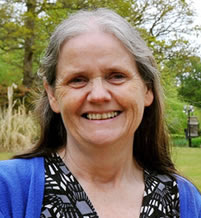
The Family History Show is coming back next month!
After two extremely successful virtual events held online last year, The Family History Show, Online is returning in February so that once more you can enjoy all the features of a physical family history show, but from the comfort and safety of your own home.
The Family History Show, Online, organised by Discover Your Ancestors magazine, is gearing up for its return on Saturday 20th February 2021.
You’ll have the opportunity to put your research questions to an expert, watch free talks and to speak to over 100 family history societies, archives and genealogical suppliers by text, audio, video chat or email from the comfort of your own home.
You will also be able to submit your questions to their Ask the Experts panel before the show and you have a choice to either book a free 1-to-1 session or to watch the live stream question panel at 15:30 where you can ask your questions live!
Make a date in your diary and snap up an early bird ticket now for only £6! You’ll also get a downloadable goody bag worth over £10.
New partners and features to be announced shortly, watch for more news!
https://thefamilyhistoryshow.com/online/tickets/
Featuring All New TalksProfessionally presented and recorded lectures, not just streamed screen shares, and each talk will be available for 72 hours, so don’t worry if you’re in another time zone. These presentations will cover a wide variety of family history topics from multiple speakers and will be available throughout the day. |
| Occupations Dr Simon Wills – Genealogist, Writer, and Author |
 |
| Country Bumpkins: Tracing Rural Ancestors Else Churchill, The Society of Genealogists |
 |
| Maps for Family Historians Gill Blanchard, House Historian and Professional Genealogist |
 |
| Tracing your Ancestors’ lives through online resources Amelia Bennett, Expert Researcher, Census Detective with the SOG |
 |
| Working with your Autosomal DNA Test Donna Rutherford, DNA Expert |
 |
| Ask the Experts Live Q&A Panel with Amelia Bennett, Gill Blanchard and Donna Rutherford |
Ask the Experts
Submit your questions to their panel of experts before the show. Either book a free 1-to-1 session or watch the live stream question panel at 15:30 where you can ask your questions live!
Societies, Archives and Companies
All the features of a physical show
|
As well as over 100 virtual exhibitor stalls to visit, you will be able to enjoy online talks throughout the day and put questions forward to specialists in the popular ‘Ask the Experts’ area. |
What do visitors to the show think?
|
“The Exhibitor Hall, with the video chat and Question Feed, and details and links to their products, etc. Your show is a very close, and in some ways better, reproduction of the live event, and I’m looking forward to attending next year’s event.” – Scott Barker “I just wanted to say that Saturday’s event was great. I had three people beam into my work room – one from New Zealand, one from America and one from Scotland! I also had a chat enquiry from Australia. I had no idea this event would be global!” – Maddy Mills from The Crafty Genealogist “I know the actual shows are great, but for us not able to get there, these online days are ideal. I put aside time to listen and it felt like a ‘day away’ from the usual routine. Well done and thank you.” – Ruth Owen |
Early Bird Ticket Offer
|
Buy your tickets in advance and save – tickets to attend The Family History Show Online are available from the website at just £6.00 each. You will also get a FREE virtual goody bag on the day worth over £10. |
 Send to Kindle
Send to Kindle















